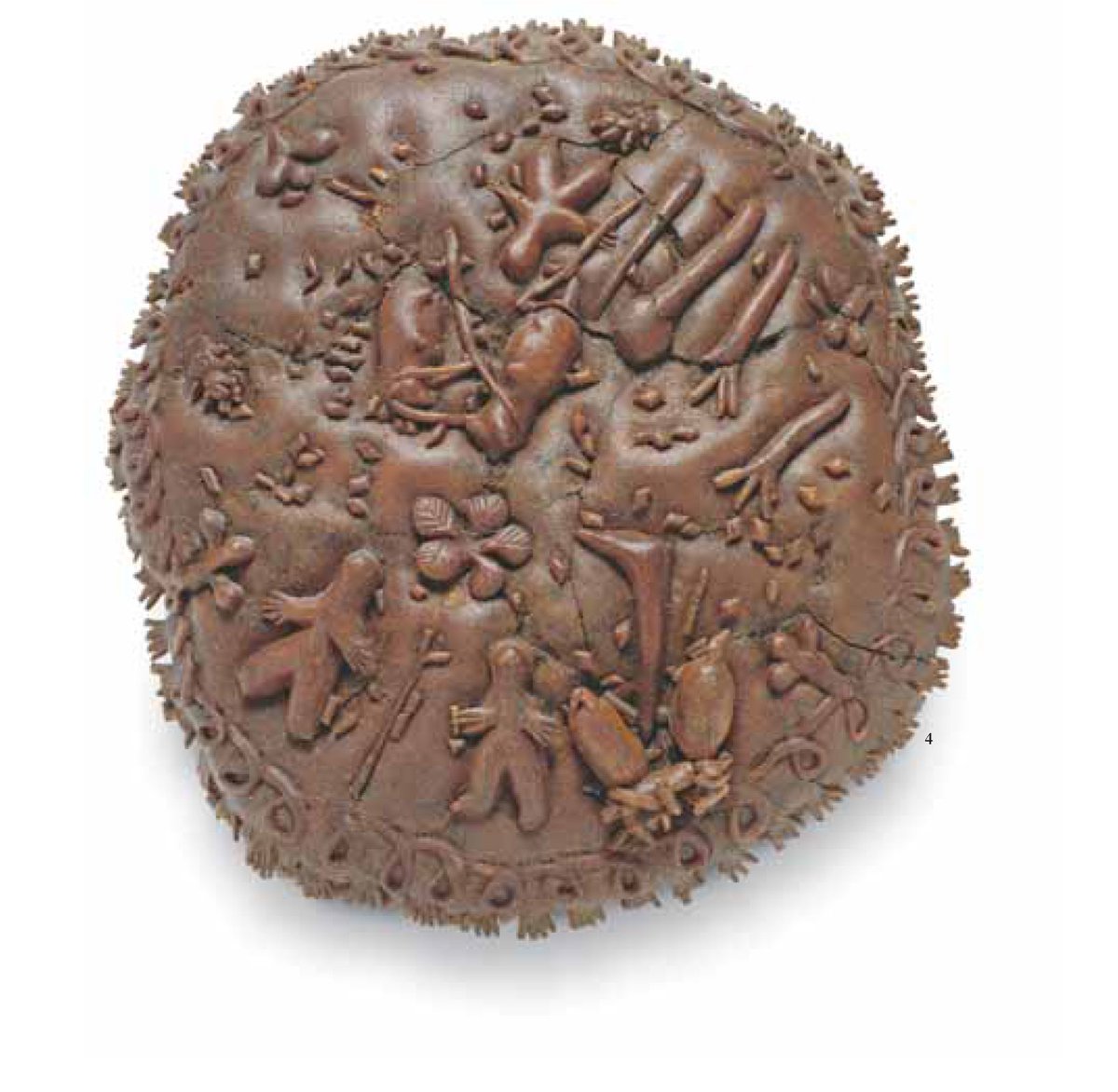
Findings in archaeological sites show that Ancient Sardinians produced wines already in Nuragic times, several centuries BCE. Following contacts (with Phoenicians) and dominations (by the Romans) kept the tradition alive and with new introductions and techniques.
Nuragic civilisations were one of the first to produce wine in the western Mediterranean.
We didn't fall under Arab rule and the production of wines increased in Middle Age, where we have several documents talking about wines and vineyards. The typical Sardinian technique-
We didn't fall under Arab rule and the production of wines increased in Middle Age, where we have several documents talking about wines and vineyards. The typical Sardinian technique-

-was called "a sa sardisca", to which it was added "a sa catalanisca" after the Catalan conquest.
The tradition is still very much alive and grape harvest in September has always been a great festival in the latest centuries. It was a festival that could last for days and many-
The tradition is still very much alive and grape harvest in September has always been a great festival in the latest centuries. It was a festival that could last for days and many-

acquaintances were invited to help and later feast, with plenty of food, music and dances.
Traditionally, white wine was made directly in the vineyards while red grapes were brought to the village for the production.
Here are some of the most important Sardinian wines ⬇️

Traditionally, white wine was made directly in the vineyards while red grapes were brought to the village for the production.
Here are some of the most important Sardinian wines ⬇️


🍇Vermentino. It's the typical white wine of Sardinia. Cultivated especially in the north and Gallura, it was imported from Corsica at the end of XIX century and then spread everywhere in the Island. Even if it bears a common name, it's different and varies from place to place. 

🍇Nuragus. It's typical of the Campidano of Cagliari and Oristano, it's one of the oldest types, probably dating back to Phoenician contacts. It's adaptable to many terrains. It's not very alcohlic. 

🍇Cannonau. It's the most famous among Sardinian wines, especially the one from Jerzu. Historically, it's thought to have been introduced from Spain but recent research hint at a probable cultivation back in Nuragic times! Making it one of the oldest wines of Sardinia. 

🍇Carignano. It's typical of the Sulcis, especially Santadi. It's considered of Phoenician introduction and it fits well to the sandy terrain and strong winds of the south western coast. 

🍇Moscato. It's an ancient type, existing already during Roman times. It's typical of the Mediterranean, in Sardinia it's present in part of Gallura and Campidano. It varies from place to place but it retains an amber colour and a certain degree of sweetness. 

🍇Malvasia. Cultivated in all the Campidano, the most famous is that of Bosa though. In Sardinia it's considered the wine for guests and special occasions. Its origin is Greek, introduced in XV century to Italy. In Sardinia though, it was probably introduced during Byzantine rule 

🍇Vernaccia. It's typical of Oristano. It's considered introduced by Phoenicians of Tharros, but recent findings hint that it could be older than that. The name is probably of Roman origins (meaning vernacular) and we find it already in medieval codices (Breve di Villa di Chiesa) 

All the information and most pictures are taken from "Vini di Sardegna" by Regione Autonoma della Sardegna, where you can find more details, and more wines 🍷🍇 The pictures of the glasses of wine are accompanied by parts of our traditional dresses.
• • •
Missing some Tweet in this thread? You can try to
force a refresh























